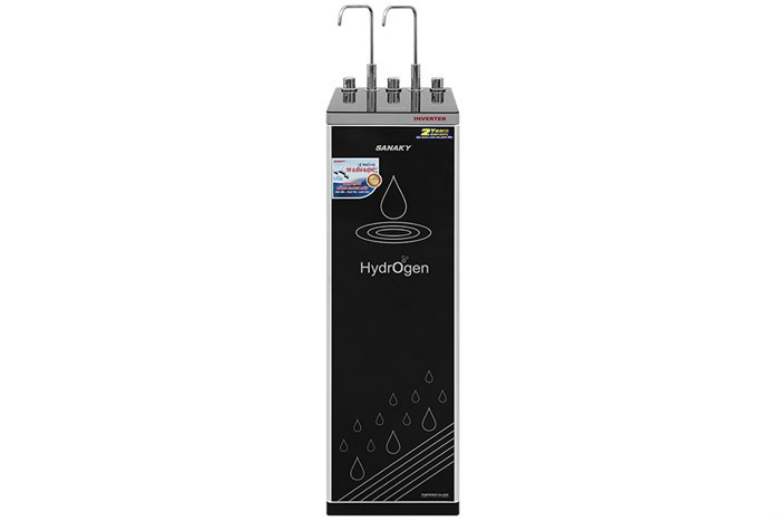
Integrated hot and cold Reverse Osmosis (RO) water purifiers have become an indispensable convenience in many modern homes and offices. They offer unparalleled ease, providing pure, temperature-controlled water in an instant. However, like any sophisticated electronic device, over time, these water purifiers can encounter a few hiccups. Understanding these common problems and knowing how to initially troubleshoot them can save you time, money, and the inconvenience of calling a technician for every minor glitch.
This article will delve into the most frequent issues faced by hot and cold integrated RO water purifiers, offering practical solutions and guiding you on when to seek professional assistance.
No Hot Water or Insufficiently Hot Water
One of the primary advantages of an integrated RO system is its ability to dispense instant hot water. When this feature malfunctions, it can be quite frustrating. Often, the heating element might be faulty or burnt out, the thermostat could be malfunctioning, or simply, the unit isn't receiving adequate power for the heating component. Sometimes, a low water level in the hot tank or a faulty water level sensor is the culprit. Over time, limescale and mineral deposits can accumulate on the heating element, significantly reducing its efficiency. Additionally, some units have a safety thermal cut-off switch that might have tripped.
When you encounter this problem, the first step is always to check the power supply to ensure the unit is properly plugged in and the outlet is functional. You should also try to locate and press the thermal reset button (typically red, found on the back or bottom of the unit). Make sure there's sufficient water flowing into the unit and that the hot water tank is filling correctly. If these initial checks don't restore hot water, or if you suspect a faulty heating element or thermostat, it's best to call a professional technician. Descaling a heating element, for instance, should ideally be done by someone experienced.
No Cold Water or Insufficiently Cold Water
Similar to hot water issues, a lack of cold water can be equally inconvenient, especially during warmer weather here in Hanoi. Common causes include a malfunctioning compressor, a refrigerant leak, or a cooling fan that isn't working effectively, leading to the cooling system overheating. The cold water temperature sensor or thermostat might also be faulty. Sometimes, poor ventilation around the unit can cause the cooling system to underperform.
To troubleshoot, first verify the power supply to the unit. Then, ensure the unit has ample clear space around it for proper air circulation. If accessible and you're comfortable, gently clean any dust or debris from the condenser coils, usually located at the back of the unit. Keep in mind that after installation or a power outage, it can take a few hours for the unit to chill water to the desired temperature, so patience is key. However, if the problem lies with the compressor, refrigerant, or the cooling fan, you'll need to contact a qualified technician, as these issues demand specialized tools and expertise for safe repair.
Low Water Flow or No Water Dispensing
This is a very common issue with all RO systems, and it can be particularly frustrating when you're expecting instant access to water. The most frequent culprit is clogged filters; sediment, carbon, or RO membrane filters can become saturated and restrict water flow over time. Low incoming water pressure from your main supply can also hinder the RO system's ability to produce water. Sometimes, the RO membrane itself becomes clogged with dissolved solids, or the pressure tank is faulty and fails to maintain adequate pressure. Kinked water lines or a stuck solenoid valve are also potential causes.
When facing this situation, you should prioritize checking the lifespan of your filters and replacing them according to the manufacturer's recommendations; this often resolves most flow issues. Ensure the main water supply valve to your purifier is fully open. Visually inspect all water lines for any kinks or blockages. For the pressure tank, you can try depressurizing it (following the manufacturer's instructions) and checking if it refills correctly. If replacing filters doesn't solve the problem, or if you suspect a faulty RO membrane, pressure tank, or solenoid valve, it's best to call a technician for accurate diagnosis and repair, especially since replacing an RO membrane requires precision.
Water Leakage
Leaks can range from minor drips to significant puddles, potentially causing damage to your flooring or cabinetry. Often, loose fittings or connections occur over time, or O-rings simply wear out. Cracked filter housings, due to excessive water pressure or physical damage, are another possibility. Additionally, damaged water tubing, a leaking faucet, or even hot/cold water tanks overfilling due to a faulty float valve can lead to leaks.
Immediately upon detecting a leak, turn off the main water supply to your purifier to prevent further damage. Then, carefully identify the source of the leak by inspecting all connections, filter housings, and tubing. Gently tighten any loose fittings, but be careful not to overtighten, as this can cause cracking. If a connection continues to leak, inspect the O-ring inside for damage or displacement and replace it if necessary. If you can't pinpoint the source of the leak, or if the leak is from a cracked housing or a damaged internal component, contacting a professional technician is essential.
Strange Tastes or Odors in Purified Water
The primary purpose of an RO system is to provide clean, great-tasting water. If the water tastes or smells odd, it defeats the system's core function. The most common reason is expired or clogged filters, particularly carbon filters, which are responsible for removing tastes and odors. If they're old or saturated, they simply can't do their job effectively anymore. In rare cases, bacterial growth can occur within the system, especially if it's not used regularly or if a component is compromised. A damaged or degraded RO membrane can also allow impurities to pass through. New systems might also have a slight plastic-like taste initially, which usually dissipates after flushing a few tanks of water.
When this issue arises, you should always start by replacing all pre-filters and post-filters. This resolves the majority of taste and odor problems. After replacing filters, flush several tanks of water through the system to clear out any residual tastes or air. If you suspect bacterial contamination, the system may need to be sanitized, which often involves special cleaning solutions and is best performed by a professional. If new filters don't solve the problem, or if you suspect a compromised RO membrane or significant bacterial contamination, it's wise to call a technician for a thorough inspection and sanitization.
No Power to the Unit
A completely dead unit is a clear indicator of a power supply issue. This could be due to a damaged power cord, a faulty electrical outlet, a blown fuse or tripped circuit breaker in your home's electrical panel, or internal wiring issues. In some cases, the main control board itself could be malfunctioning.
To troubleshoot, inspect the power cord for any visible damage. Test the outlet by plugging in another appliance to confirm it's working. Check your home's fuse box or circuit breaker panel and reset any tripped breakers. Some units also have a power reset button you can try pressing. If the outlet is working and the cord appears fine, but the unit still has no power, it points to an internal electrical issue that demands a qualified technician. Never attempt to open the unit and tamper with electrical components yourself.
Maintaining Your Integrated RO System
Preventative maintenance is the cornerstone of minimizing these issues. Regularly replacing filters according to the manufacturer's recommendations is crucial. Periodically check for leaks, ensure proper ventilation, and be attentive to any changes in water taste or flow.
While many minor issues can be resolved with basic troubleshooting, it's vital to recognize when a problem is beyond your DIY capabilities. Attempting complex repairs without proper knowledge and tools can lead to further damage or even personal injury, especially when dealing with electrical components and pressurized water systems. When in doubt, always consult a certified appliance repair technician specializing in RO water purifiers. They possess the expertise, tools, and replacement parts to diagnose and fix problems safely and effectively, ensuring your hot and cold integrated RO water purifier continues to provide pure, refreshing water for years to come .
--------------------------------------------------------------------------------------------------------------
SANAKY VIETNAM., CO LTD - Manufacturer of Chest Freezer - Upright Cooler, Transformer, RO Water Purifier...
 Vietnamese
Vietnamese  English
English  Chinese
Chinese  French
French  Spanish
Spanish  Russian
Russian  Arabic
Arabic  Portuguese
Portuguese